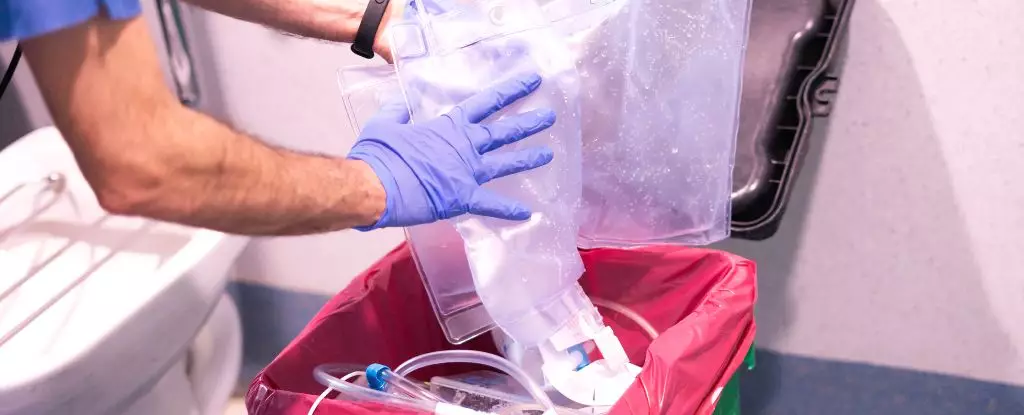Plastic pollution has escalated into one of the most pressing environmental dilemmas of our era. Discarded plastics litter our lands, choke animals, and clog our oceans, presenting challenges that seem insurmountable. The sheer scale of plastic waste—estimated to reach over 12 billion tons by 2050—raises urgent questions about sustainability and the future of our planet. With traditional waste management systems unable to cope, researchers have been exploring alternative solutions. Surprisingly, some of nature’s simplest organisms—bacteria—might hold the key to addressing this monumental problem.
Microbial Marvels in Plastic Degradation
Recent breakthroughs in microbiology have unveiled the existence of specific bacteria capable of breaking down various types of plastics. These “plastic-eating” microbes offer a glimmer of hope, suggesting innovative pathways for recycling and waste management. However, the implications of harnessing these bacteria are more complex than they appear. While their ability to biodegrade plastics could mitigate environmental harm, their deployment raises critical concerns, particularly in sensitive environments like hospitals.
In a fascinating twist, researchers have turned their attention to the genomes of hospital pathogens, seeking to determine whether these harmful bacteria have adapted similar plastic-degrading capabilities. The findings were shocking. Some notorious pathogens, including Pseudomonas aeruginosa, are not only surviving but potentially thriving due to their ability to consume plastics. This revelation prompts a serious reevaluation of how we view the role of bacteria in our environments—both beneficial and harmful.
The Dark Side of Plastic-Eating Pathogens
P. aeruginosa, a bacterium infamous for its role in hospital-acquired infections, is linked to approximately 559,000 deaths each year. The same bacterium that can lead to dire health consequences for patients—a threat particularly for those with compromised immune systems—has now revealed a talent for utilizing plastics as a nutrient source. This duality raises unsettling questions: could the persistence of such bacteria in medical settings be fueled by their capacity to feed on plastic materials commonly found in medical devices?
Research has discovered that P. aeruginosa possesses a gene that enables it to produce an enzyme capable of degrading plastics. Identified in a strain isolated from a wound infection, this enzyme, dubbed Pap1, not only facilitates plastic consumption but also enhances the bacteria’s virulence. What once was seen as a potential solution to plastic waste now unfolds as a potential catalyst for increased hospital infections. The paradox of leveraging these microbes becomes strikingly clear—they can effectively contribute to waste management yet also jeopardize human health.
Biological Battle: Bacteria vs. Bioplastics
The ability of P. aeruginosa to form biofilms, complex communities of bacteria that are notoriously resistant to treatment, adds another layer of complexity. When these bacteria degrade plastics, they utilize the breakdown products to fortify their biofilm structure, creating an even more formidable barrier against antibiotics and the immune system. The idea that plastic waste contributes to a stronger bacterial community is alarming; it suggests that our reliance on plastics not only contributes to environmental degradation but may simultaneously exacerbate public health concerns.
Moreover, this situation is particularly troubling for various medical treatments that incorporate plastics—everything from sutures to catheters and dental implants. As these pathogens potentially evolve to exploit the plastic used in medical devices, the risks of treatment infections escalate. Even with advances in antimicrobial materials, the mere fact that certain bacteria can develop plastic-degrading abilities poses significant challenges to ongoing public health efforts.
A Call for Caution and Innovation
As we grapple with the implications of these findings, there is an urgent need for careful consideration in the design and selection of materials used in medical applications. The potential for plastic-eating bacteria to impact patient care must be balanced with innovative strategies to combat plastic pollution. Researchers are actively exploring methods to mitigate the risks these pathogens pose, such as incorporating antimicrobial agents into hospital plastics.
Ultimately, understanding the double-edged sword of plastic-eating bacteria demands a multidisciplinary approach involving microbiology, environmental science, and public health. With the right strategies, these microscopic organisms could transform our relationship with plastic, but it requires a shift in how we manage both waste and health care practices. As we advance, it is essential to maintain vigilance, ensuring that in our quest for sustainable solutions, we do not inadvertently open the door to new health crises.

